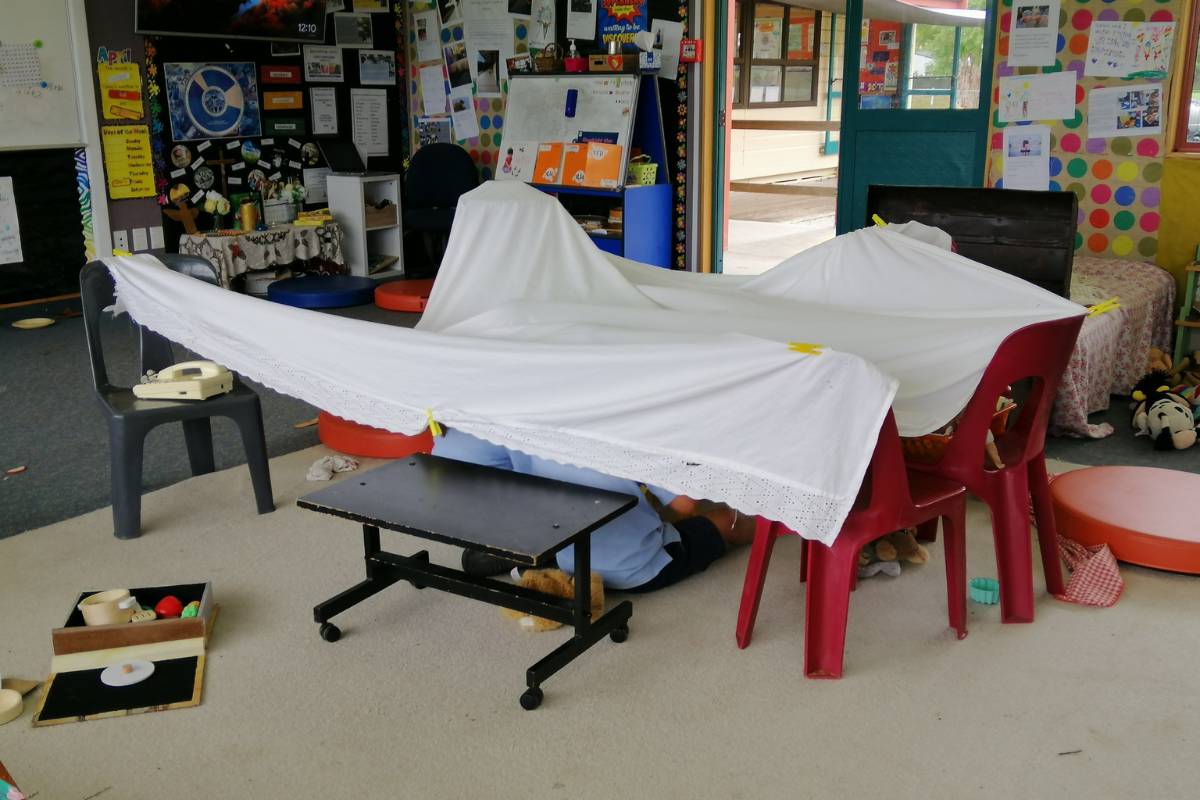No products in the cart.

Embracing Play Pedagogy: A Journey of Transformation at St. Patrick’s School
Longworth Education has embarked on a journey to show of Play Pedagogy from Aotearoa New Zealand on the world stage. Play Pedagogy is a way of integrating children’s play experiences with curricular learning, giving akonga (students) the flexibility to find their own solutions to both new and existing problems.

School Information
- Current School Roll: 370
- Urban primary kura/school
- Full primary (Years 0 – 8)
Physical Environment
Mixture of both single-cell and open plan/MLE environments/hubs
Community
We are a Catholic special character school with a diverse cultural community. This includes 22.9% Māori, 57% NZ European, 7% Pasifika, 11.2% Asian and 1.9% identifying as other. Our equity index is 441.
Introduction
At St. Patrick’s School, an educational transformation has been underway for the past eight years, centered around the implementation of play pedagogy and developmentally responsive practices. What began as a single teacher’s passionate advocacy for play-based learning has now evolved into a whole-school approach, encompassing students from Junior School (Years 0-2) to the Senior School (Years 5-8). This article delves into the school’s journey, explores the impact of these practices on student learning outcomes, discusses the changes observed in teachers and their practices, addresses challenges faced, and looks ahead to the future.
Play Pedagogy Takes Root
Approximately eight years ago, a dedicated teacher within the Junior School initiated the implementation of play practices. The vision to embrace play as a pedagogy gained momentum, resulting in a complete transformation of learning spaces. Traditional single cell classrooms were reimagined into dynamic environments featuring a diverse range of learning spaces. Additionally, a designated “workshop” room was established to support structured literacy and math instruction.
A Collaborative Learning Journey
In 2021 and 2022, the St. Patrick’s School team collaborated with Longworth Education to deepen their understanding of play-based learning. Together, they worked tirelessly to redefine their roles as teachers, reflect on their responsiveness to students, and reimagine classroom practices. The process aligned with the school’s curriculum design and aspirations for their ākonga (learners). Throughout this journey, the conversation expanded to focus on the holistic development of each child, a perspective that continues to evolve as the school progresses.

Impacts on Student Learning Outcomes
The implementation of play pedagogy has yielded notable positive outcomes for the students at St. Patrick’s School. The learning environment promotes a sense of happiness and calmness among ākonga, reinforcing their belief that they are valued and their interests are respected. Through risk-taking and the freedom to explore, students have developed a willingness to trust their teachers and engage with challenging tasks. The play-based approach has nurtured resilience, fostering a sense of self-efficacy among students as they tackle learning challenges.
Transforming Teacher Practices
As teachers embark on their own play journey, their experiences vary based on individual progress. However, a common theme emerges — a growing trust in students. Teachers have learned the power of observation and active listening, which inform their practice and enable them to tailor the curriculum to meet each child’s developmental stage and needs. By immersing themselves in the learning process alongside their students, teachers have discovered the joy of shared exploration and the power of relationships in facilitating growth.
Overcoming Challenges
Implementing play pedagogy has presented several challenges for St. Patrick’s School. The first challenge was fostering a collective approach to growing pedagogical knowledge and practice among staff. Additionally, practical issues related to space and storage of loose parts had to be addressed. Furthermore, ensuring parent community buy-in and supporting their understanding of play-based learning posed another hurdle. Despite these challenges, the school remains committed to continuous improvement and effective communication to overcome obstacles.
Achieving a Balanced Pedagogy
One misconception surrounding developmentally responsive pedagogy is the perceived dichotomy between play-based learning and the teaching of literacy and numeracy. At St. Patrick’s School, the explicit instruction of literacy and numeracy is seamlessly integrated into the play-based approach. Teachers rotate between explicit instruction “workshops” and engaging in play alongside students, ensuring that both aspects are given equal attention throughout the day.

Addressing Literacy and Numeracy Concerns
St. Patrick’s School has observed that their literacy and numeracy achievement levels align with their students’ typical development, alleviating concerns. To maintain these positive outcomes, the school focuses on ongoing professional development and establishing best practices. By equipping teachers with a deep understanding of the “why” behind their instructional choices, the school believes that student achievement will continue to flourish.
Looking Ahead
St. Patrick’s School envisions a future where play pedagogy is further refined and deeply embedded in their educational practices. Continuing their partnership with Longworth Education, the school plans to utilize the P-BLOT (Play Based Observational Tool) for professional growth cycles, ensuring consistent implementation of best practices. Emphasizing shared learning, reflection, and collective teacher efficacy, the school aims to provide a rich and engaging educational experience for all students.
The transformative journey at St. Patrick’s School, marked by the adoption of play pedagogy and developmentally responsive practices, has yielded significant benefits for both students and teachers. By embracing play as a pedagogy, the school has created an environment that values the whole child, encourages exploration, and fosters trusting relationships. Challenges have been met with determination, and the achievements thus far serve as inspiration for the continued evolution of the school’s pedagogical approach. With a commitment to ongoing professional development and a focus on collective growth, St. Patrick’s School stands as a beacon of innovation and excellence in education.


